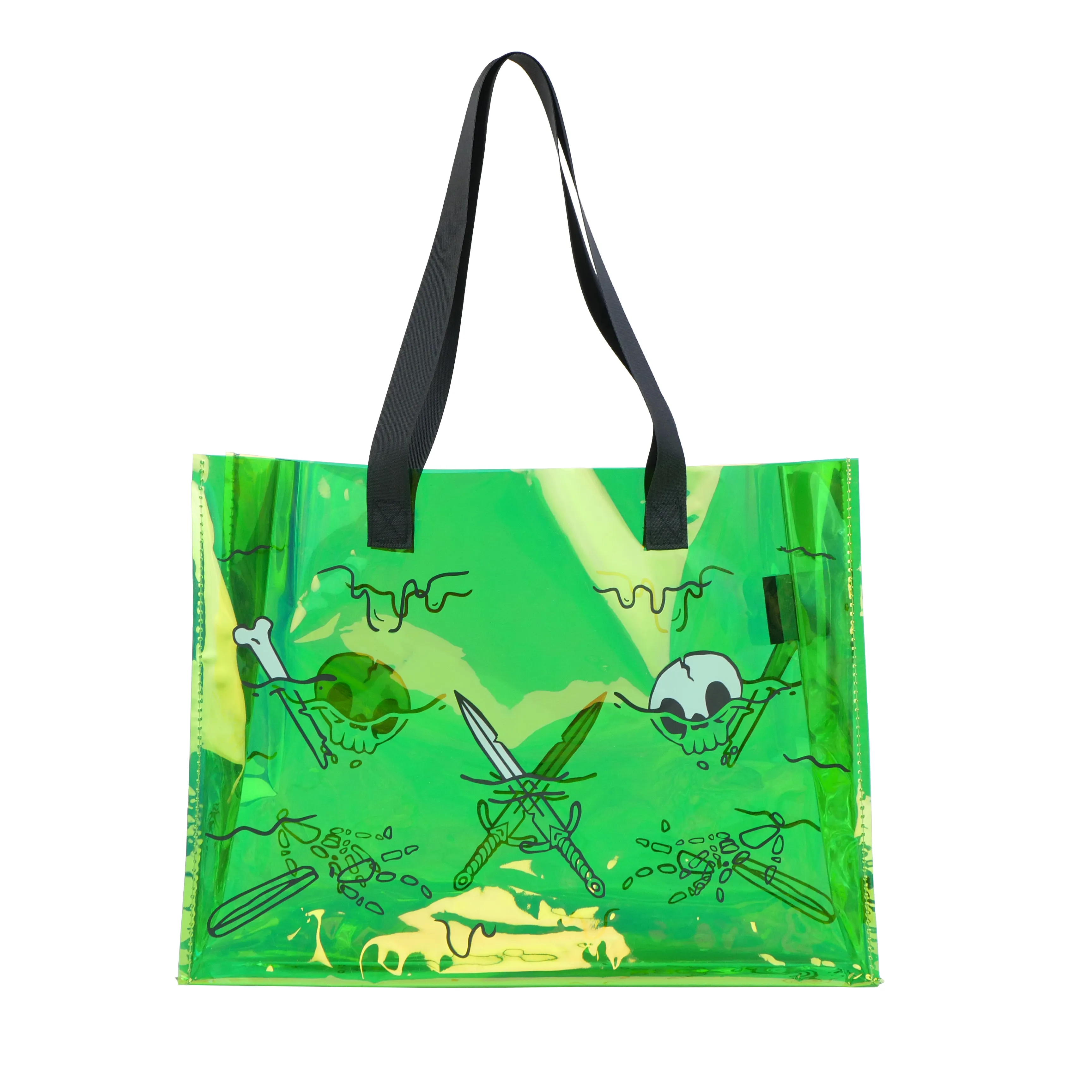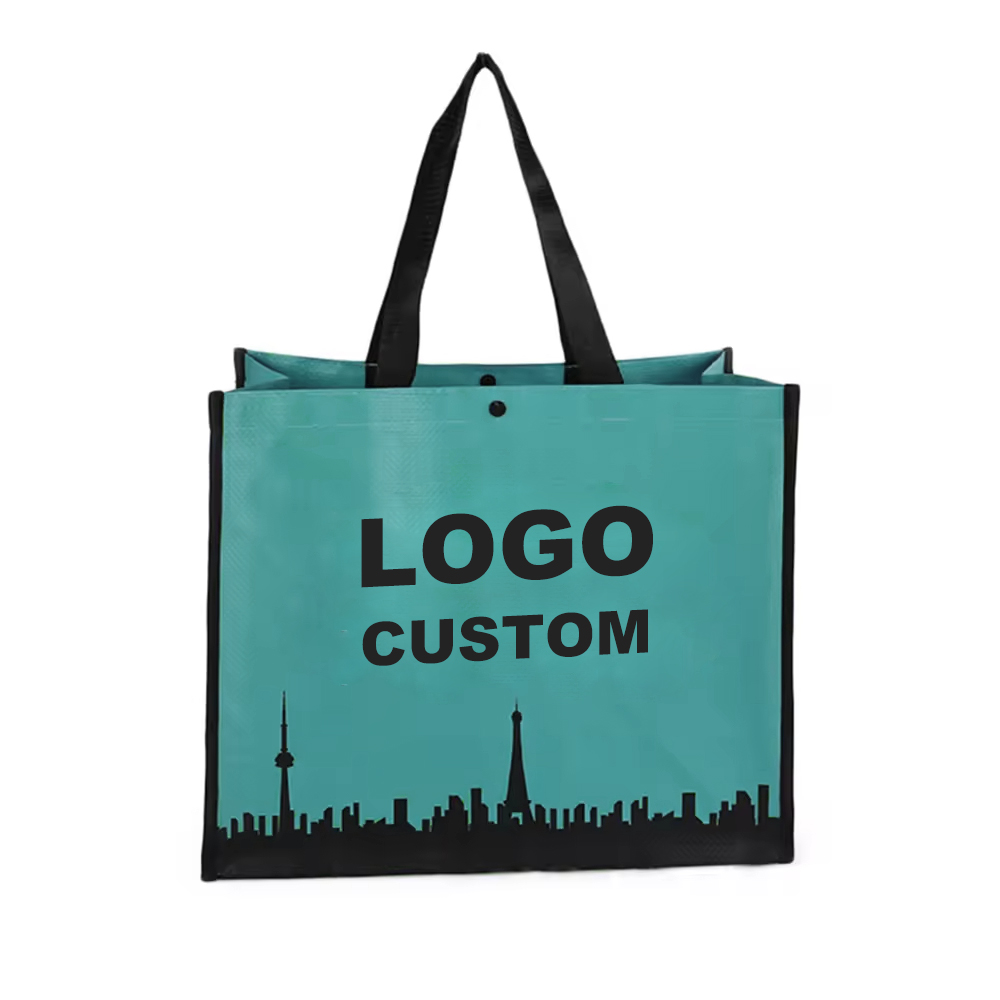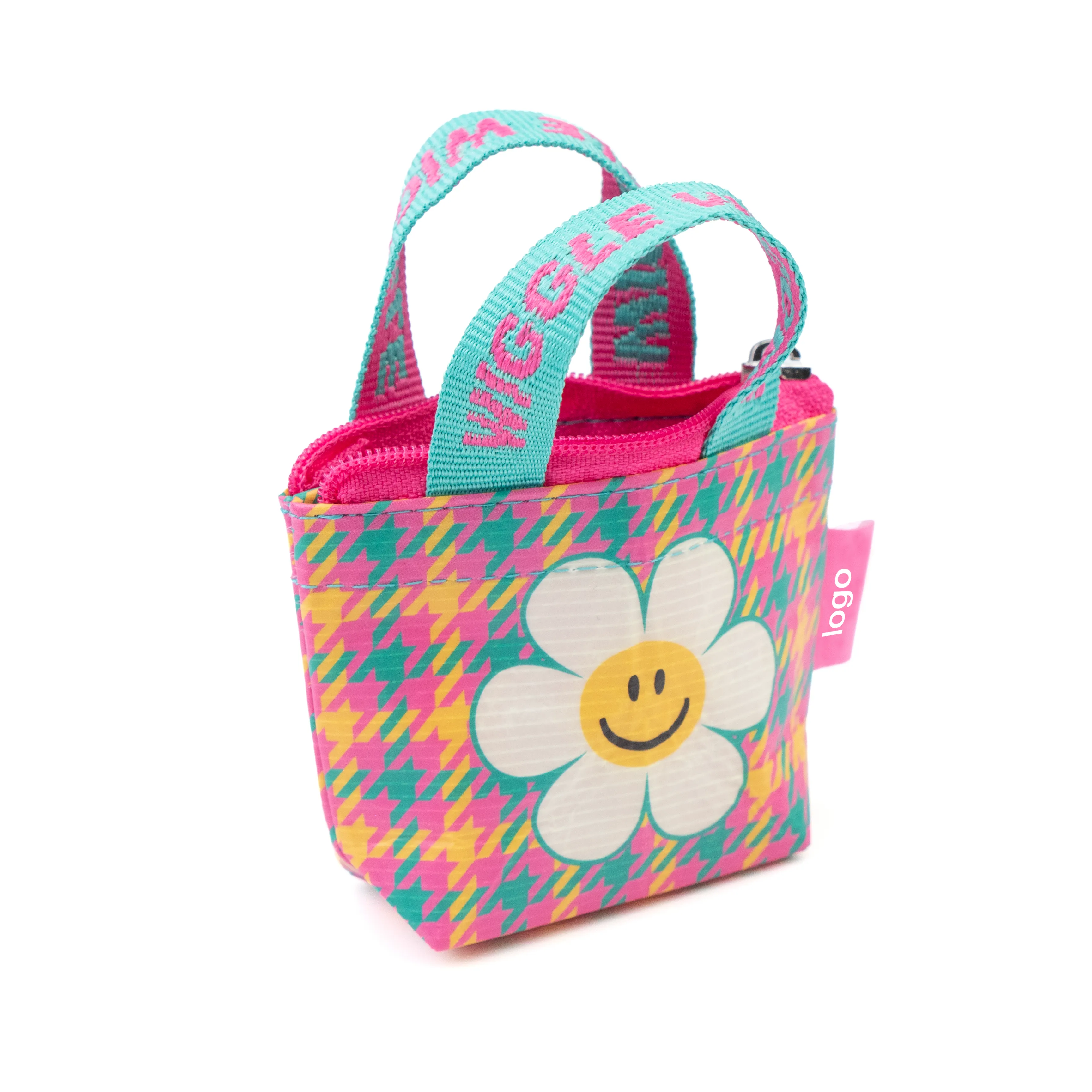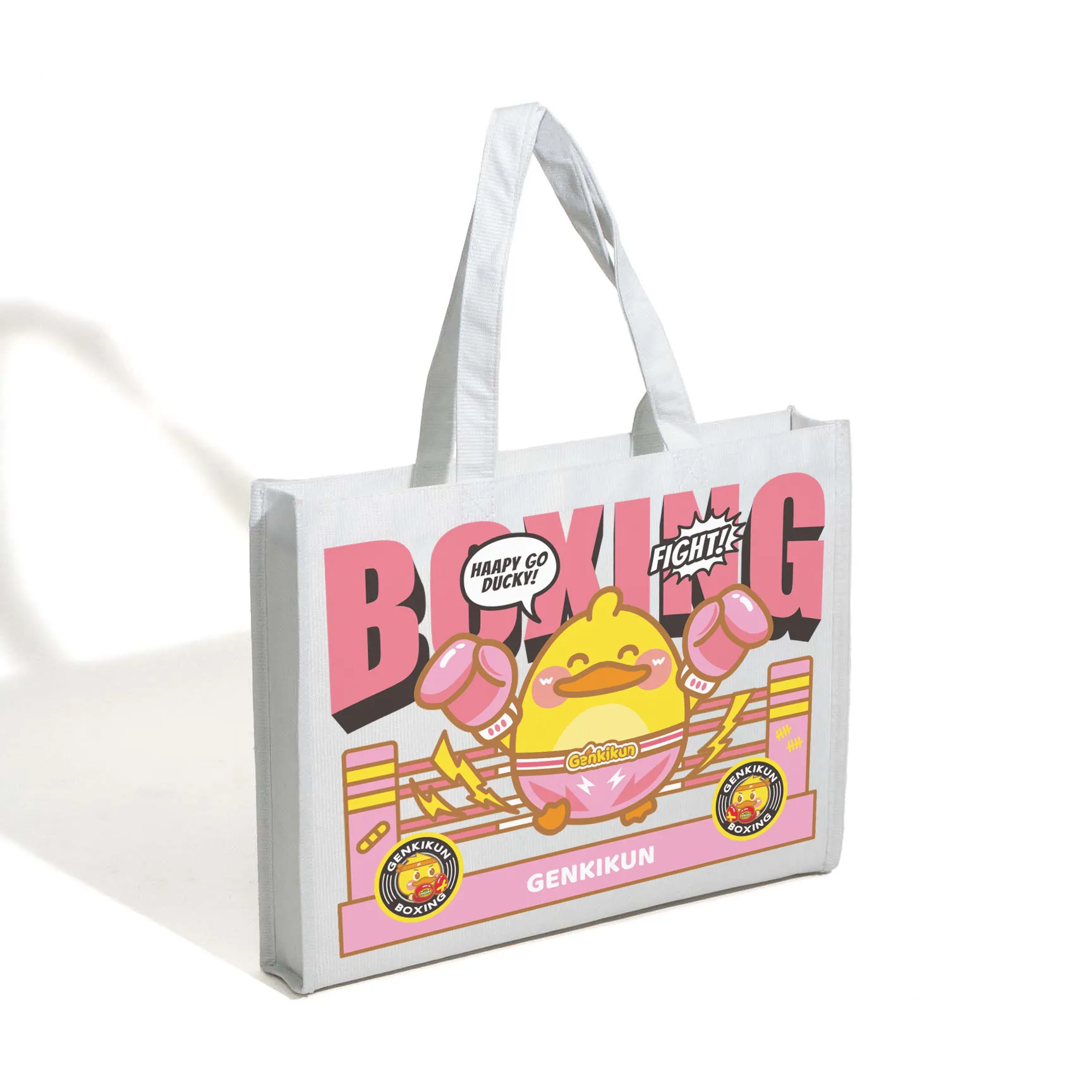Screen Printing vs Heat Transfer:Which Is Better for Custom Bags
Introduction – The Importance of Printing in Custom Bag Branding
In today's competitive market, custom bags have become indispensable tools for modern businesses seeking effective brand promotion. From eye-catching tote bags at trade shows to sophisticated retail packaging, a well-designed bag transforms into a walking advertisement, carrying your brand message far beyond your storefront. However, the impact of a custom bag hinges significantly on its print quality. A vibrant, durable, and accurately reproduced logo or design can elevate your brand, while a poorly executed print can detract from your professional image.
This is where the choice of printing technique becomes paramount. For brands exploring options for custom bag printing, understanding the core differences between available methods is crucial. Among the myriad techniques, screen printing and heat transfer stand out as two of the most popular and versatile methods in bag manufacturing. Each offers distinct advantages and caters to different branding goals, material types, and production scales. This guide will deep-dive into each method, helping you determine which is the optimal choice for your next batch of custom bags.
What Is Screen Printing?
Screen printing, also known as silkscreen printing, is a time-honored technique that has been used for centuries to apply designs to various surfaces, including textiles. The process involves pushing ink through a woven mesh stencil onto the fabric. Each color in the design requires a separate stencil, which means the complexity of the setup increases with more colors. The ink is applied thickly, resulting in vibrant, opaque colors with a slightly raised texture.
This method is highly versatile and suitable for a wide range of bag materials. You'll commonly find it used on natural fibers like canvas and cotton bags, lending a classic, tactile feel. It also performs exceptionally well on jute, non-woven fabrics, nylon, and polyester, making it a go-to for various promotional and retail bags. For instance, brands often opt for custom screen printed bags for large-scale production of reusable shopping bags, promotional giveaways at events, or durable employee tote bags. The robust nature of the ink application means that the designs are incredibly long-lasting and wash-resistant, able to withstand years of use without fading or cracking. This durability makes screen printing an ideal choice when looking for longevity and consistent brand representation on your bulk orders.
What Is Heat Transfer Printing?
Heat transfer printing, often simply called heat pressing, is a more modern printing method that utilizes heat and pressure to transfer a pre-printed design from a special film onto the bag material. The design is first printed onto a transfer paper or vinyl, and then, using a heat press machine, the image is physically adhered to the fabric. This process essentially melts or bonds the image onto the material's surface.
This technique excels on different material types, particularly synthetics or those with a smoother finish, such as polyester, nylon, PU leather, and various coated fabrics. It's the preferred method for reproducing intricate designs, full-color graphics, detailed photographs, or logos with subtle gradients, where screen printing might struggle with color complexity. For example, if a boutique is launching a limited edition bag with a vibrant, multi-tone graphic, or a company needs to print a photograph onto a bag for a special event, heat transfer on bags becomes the favored solution. This method is particularly well-suited for smaller batches or highly customized designs, providing a crisp, often glossy, and very detailed finish that can capture the nuances of complex artwork effectively. Its ability to handle rich color palettes with precision makes it a strong contender for trending designs and personalized items.
Key Differences Between Screen Printing and Heat Transfer
To help you make an informed decision for your custom bags, let's break down the core distinctions between these two popular printing methods:
| Feature | Screen Printing | Heat Transfer Printing |
|---|---|---|
| Appearance | Bold, matte finish, vibrant and opaque colors, slightly raised texture. | Often a slightly glossy, photo-like finish, very detailed, can feel like a thin plastic layer on the fabric. |
| Durability | Highly durable, excellent wash-resistance, inks deeply penetrate fibers or sit robustly on top. Resistant to cracking. | Good initial durability, but might be prone to cracking, peeling, or fading over time with extensive washing or harsh use, especially if not applied correctly. |
| Cost | Economical for larger bulk orders due to high initial setup costs (screens), but low per-unit cost. | More cost-effective for small runs or one-off pieces, as setup costs are lower, but per-unit transfer cost can be higher for very large quantities. |
| Color Complexity | Limited number of colors per design (each color adds to screen setup cost). Best for solid block colors. | Supports full-color, photographic prints, and intricate gradients with virtually no color limitations. |
| Production Speed | Relatively fast once screens are made; efficient for large-volume production. | Slower initial transfer printing onto film, but quick per-piece application. Overall slower for very high volumes compared to automated screen printing. |
| Eco-friendliness | Can use water-based inks which are more eco-friendly. While screens are reusable, cleaning involves chemicals. Generally produces less plastic waste than vinyl transfers. | Evolving with eco-friendly ink films (e.g., water-based transfers). Some vinyl transfers can pose recycling challenges. Less chemical waste from screen cleaning, but film waste. |
How to Choose the Right Printing Method for Your Custom Bags
The optimal choice for your custom bag printing project depends on several critical factors related to your product, budget, and brand vision. Consider each point carefully:
- Consider Material Type: Is your bag made of natural cotton, sturdy canvas, or a synthetic like polyester or nylon? Custom screen printed bags thrive on natural fibers, offering excellent ink adhesion. Heat transfer on bags, conversely, often yields superior results on smoother, synthetic materials, where the film can bond effectively without soaking into the fibers too deeply. For specialized materials like coated waterproof fabrics, heat transfer might be the only viable option.
- Evaluate Order Quantity: Do you need hundreds, thousands, or just a few dozen bags? For bulk orders (typically over 100-200 units), the economies of scale make screen printing significantly more cost-effective. The initial setup cost is distributed across many units. For small runs, promotional items, or bespoke designs where you only need a handful of bags, heat transfer's lower setup costs make it the more budget-friendly choice.
- Determine Design Complexity: Is your logo a simple one- or two-color design? Screen printing excels at bold, solid colors. Does your artwork feature multiple colors, intricate details, fades, or photographic elements? If so, heat transfer printing is undoubtedly superior, offering unparalleled detail and color reproduction.
- Align with Brand Image: Does your brand emphasize a rustic, artisanal, or environmentally conscious aesthetic? Custom screen printed bags often possess a classic, handmade feel, especially with water-based inks. If your brand leans towards a modern, vibrant, or high-tech image, or if you require precise color matching across a complex design, heat transfer on bags can deliver that sleek, polished look. Consider also the tactile feel the print imparts to the bag – screen print usually feels softer and more integrated into the fabric, while heat transfers can sometimes feel slightly plasticized.
Which Printing Method Is Better for Your Business?
Based on these considerations, we can draw some clear recommendations for different business needs:
- Screen Printing is best for:
- Wholesalers and distributors requiring large volumes of uniform bags.
- Promotional giveaways at conferences, trade shows, or large corporate events where durability and cost-effectiveness for bulk are key.
- Event bags for festivals, schools, or charities.
- Brands utilizing natural fiber bags (cotton, canvas, jute) for their primary packaging or merchandise.
- Heat Transfer is best for:
- Boutiques or designers creating limited edition collections with intricate, multi-color artwork.
- Personalized gift bags or fashion packaging that demands high detail and vibrant imagery.
- Custom bags that need photographic quality prints.
- Brands focusing on smaller, more exclusive runs or seasonal offerings.
Some innovative brands even combine both techniques for hybrid results, using screen printing for a large, bold base color or logo, and then adding a small heat transfer detail for high-resolution elements or personalized touches. This strategic combination allows for achieving both cost-efficiency on large areas and intricate detail where it matters most on custom bags.
Conclusion – The Right Print Brings Your Brand to Life
Choosing between screen printing and heat transfer for your custom bag printing project involves weighing multiple factors: the bag material, your order quantity, the complexity of your design, and your overarching brand aesthetic. Screen printing offers unmatched durability and cost-efficiency for bulk orders with simpler, bold designs on a wide range of fabrics. Heat transfer, on the other hand, provides incredible detail and full-color fidelity, making it ideal for smaller runs, complex artwork, and synthetic materials. Both methods, when applied correctly, have the power to transform a simple bag into a compelling branding tool.
Ultimately, the "better" method isn't universal; it's the one that best fulfills your specific project requirements and budget while effectively bringing your brand to life. Don't hesitate to seek expert advice to ensure your investment in custom screen printed bags or bags with heat transfer on bags delivers the desired impact.
Explore our full range of custom printed bags and expert printing solutions.
Contact us Today!FAQs
- Which printing method lasts longer on tote bags? Generally, screen printing is known for its superior durability and longevity on materials like cotton and canvas tote bags, enduring many washes without significant fading or cracking.
- Can screen printing be used on waterproof materials? Yes, screen printing can be used on many waterproof or coated materials (like some nylon or polyester fabrics), but it requires specialized inks that can adhere to these non-porous surfaces. The results may vary compared to more absorbent materials.
- What’s the minimum order for custom printed bags? Minimum Order Quantities (MOQs) for custom bag printing vary significantly by manufacturer and printing method. For screen printing, MOQs can range from 500 to 1000+ units. For heat transfer, smaller runs as low as 200 units might be possible, but often at a higher per-unit cost. Always check with your supplier.
- Is heat transfer printing eco-friendly? The eco-friendliness of heat transfer printing is improving. Many manufacturers now use water-based inks for transfers, reducing VOC emissions. However, the use of plastic transfer films and vinyl can still generate waste, which should be considered.
- Do both methods support logo color matching (Pantone)? Yes, both screen printing and heat transfer printing can support Pantone color matching to ensure your logo colors are accurately replicated. Screen printing is known for its precise spot color matching. Heat transfer also aims for high color accuracy, especially with digital transfer methods.
Hot Tags: Custom Non Woven Laminated Tote Bag Wholesale China, suppliers, manufacturers, factory, wholesale, in bulk, for sale, eco friendly tote bag, cotton canvas bags, rpet bag, foldable tote bag, cotton suit garment bag, canvas cotton drawstring bags,insulated cooler bags,canvas cosmetic bag,non woven tote bags with logo





